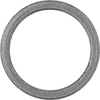Filter by
Fitting Type
Thread Type
Shape
Fitting Connection
For Use With
DFARS Specialty Metals
Fitting Material
Finish
Sleeve Material
Pipe Finish
Thread Finish
Plug Material
Fluid Handling
Fastening and Joining
Electrical
Heating, Ventilation, and Air Conditioning
Power Transmission
Material Handling
Fabricating and Machining
Facility and Grounds Maintenance










































































